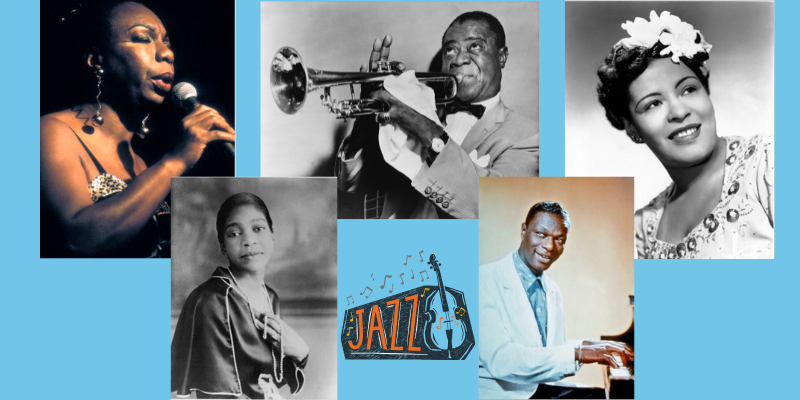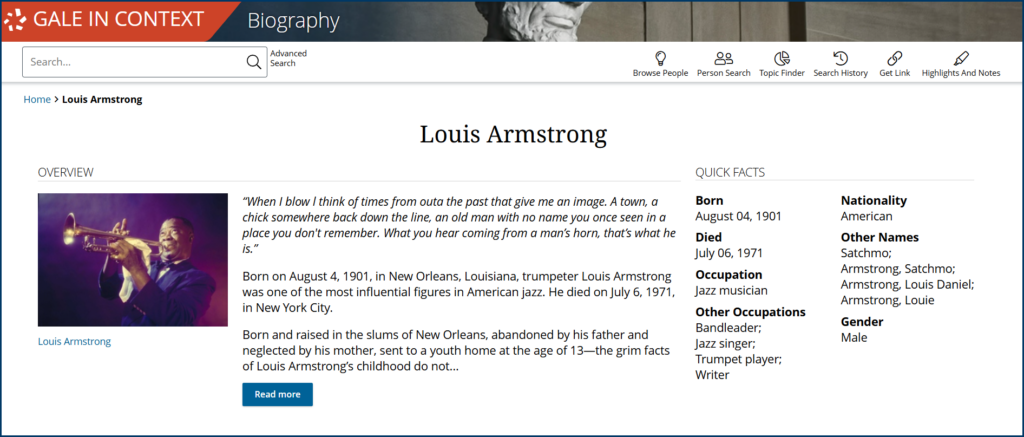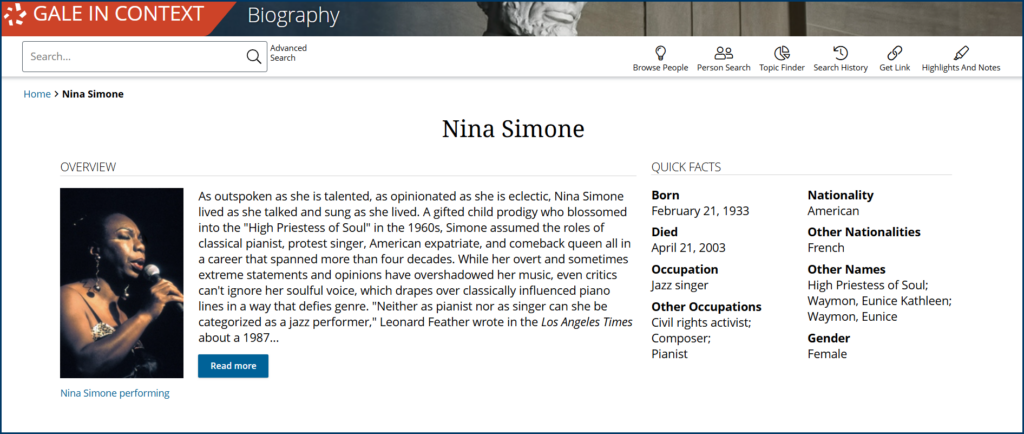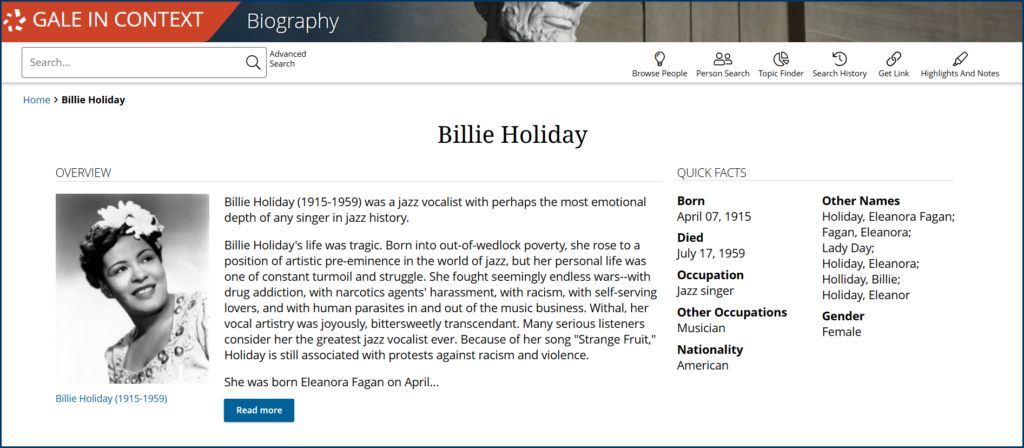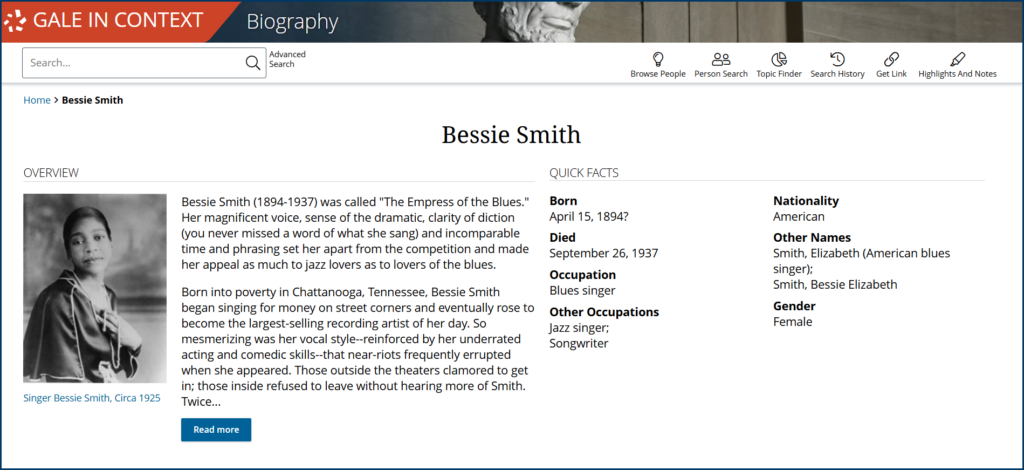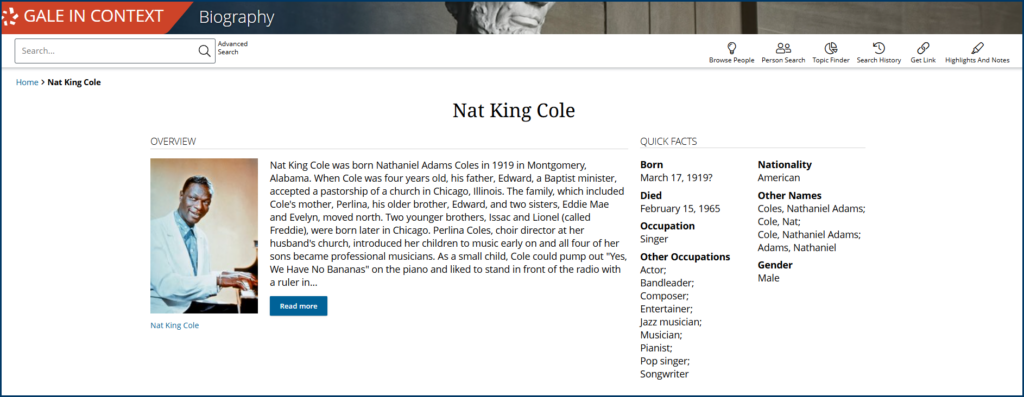| By Gale Staff |
Jazz thrives on spontaneity. It never stands still, pushing musicians—and the audience—to respond to the music in real time.
As a genre, jazz draws on the influence of the polyrhythmic beats of West African music, the soulfulness of the blues, and the offbeat bounce of ragtime. Its dynamism makes the genre a powerful teaching tool for the 4 Cs of 21st-century skills: creativity, collaboration, communication, and critical thinking—skills that prepare students for success in and out of the classroom.
Displays of creativity flourish as a soloist takes a risk, spinning a melody into existence while the rhythm section instinctively recalibrates. A vocalist stretches a phrase, leaning into the beat just enough for the band to follow—an exercise in communication and critical thinking. Call-and-response lines weave through a driving groove, turning the performance into a collaborative exchange. These characteristics make jazz one of the most intellectually rigorous and creatively freeing art forms.
On International Jazz Day, observed on April 30, let students step inside the minds of jazz’s greatest innovators with Gale In Context: Biography’s collection of primary sources, archival materials, and in-depth profiles. These resources go beyond the basic biographical overviews and present these notable creatives, collaborators, communicators, and critical thinkers as masters of musical instinct and intellect.
Louis Armstrong (1901–71)
Few artists shaped jazz as decisively as Louis Armstrong—but his journey didn’t start out on a promising note. At the age of 11, he was arrested for firing a pistol during a New Year’s Eve celebration and sent to a boys’ reformatory school. There, Armstrong picked up a cornet for the first time and, under the tutelage of the music teacher, began his journey to becoming one of the most celebrated musicians in history.
It didn’t take long for Armstrong’s talent to blossom. By his late teens, Joe “King” Oliver invited him to join Oliver’s Creole Jazz Band in Chicago. Here, his trumpet playing gained national recognition. Soon enough, Armstrong had his own ensembles called the Hot Five and Hot Seven, but his influence rippled out beyond the bandstand. He found success in Hollywood, starring in films like Hello, Dolly! and High Society, and became one of America’s most beloved cultural ambassadors.
Creativity in Armstrong’s “West End Blues”
“West End Blues” was already a well-known tune when Armstrong recorded it in 1928, but his version lifted it into something entirely new. The opening trumpet cadenza was an unaccompanied solo that defied a strict rhythmic foundation with unpredictable peaks and dips.
When he returned later with a vocal solo, he took an equally bold approach, scatting in loose, wordless phrases that abandoned lyrical structure entirely.
Nina Simone (1933–2003)
Born Eunice Waymon, Nina Simone trained in classical piano from a young age with aspirations to become a concert pianist. Despite her extraordinary talent, she was denied admission to the Curtis Institute of Music and turned to performing in nightclubs to make a living. Though not what she had aspired to, this path led to her becoming one of the most distinctive performers of the 20th century.
As a musician, Simone defied classification. She wasn’t just a jazz singer or a blues vocalist, nor was she solely a pianist or composer. She was all of these and more, reshaping genre boundaries with an artistry that refused to settle into a single form. Her classical training gave her precision. Her love for jazz gave her freedom. And, by the 1960s, her fierce advocacy for racial justice gave her a powerful sense of purpose that saw her record anthems of the Civil Rights Movement like “Four Women” and “To Be Young, Gifted, and Black.”
Creativity in “My Baby Just Cares for Me”
The original composition of “My Baby Just Cares for Me” was written for a big-band setting, bright and brassy, with a driving rhythm. Simone stripped the same melody to its essence, revealing something more intimate. Her piano plays a second voice in the song, answering and occasionally challenging her.
Her creativity blooms through the song’s subtle push and pull. Sometimes, Simone moves the song forward with a sense of urgency. Other times, she lingers, holding back just enough to create tension before easing into the following phrase.
Billie Holiday (1915–59)
Billie Holiday’s mother was only 13 years old when she gave birth to her. Her childhood, spent in Baltimore and Philadelphia, was turbulent, and she often skipped school to earn money by cleaning neighbors’ homes. In her memoir Lady Sings the Blues, she recalls striking a bargain with Alice, the owner of a local brothel, to run errands for free: “When it came time to pay me, I used to tell her she could keep the money if she’d let me come up in her front parlor and listen to Louis Armstrong and Bessie Smith on her victrola.”
Her breakthrough came in the early 1930s when producer John Hammond introduced her to the recording studio. Pairing her with Benny “King of Swing” Goodman and Teddy Wilson launched her career, but it was her solo work on songs like “God Bless the Child” and “Lover Man” that made her a legend.
Eleanora Fagan, Billie Holiday, or Lady Day. Regardless of what we call her, her hauntingly expressive voice resonates across generations of jazz musicians.
Communication in “Strange Fruit”
In her chilling performance of “Strange Fruit,” Holiday strips the protest song of anything that could soften its impact, slowing the tempo and forcing listeners to absorb every word. Silence becomes as powerful as sound. She doesn’t embellish. She doesn’t rush. She doesn’t let the listener look away.
The first line, “Southern trees bear a strange fruit,” barely rises above a murmur, her voice hushed and eerily restrained. There’s no swing, no ornamentation—just stark, almost stiff delivery that mirrors the song’s brutal imagery. By the final lines, where other singers might have built to a crescendo, Holiday lets fragility creep into her voice as the words settle in like a dark pall over the listener: “Here is the fruit for the crows to pluck/For the rain to gather, for the wind to suck.”
Bessie Smith (1894–1937)
Bessie Smith’s journey to becoming the “Empress of the Blues” began as an orphan performing songs for spare change on the streets of Chattanooga, Tennessee.
After spending her teenage years in a traveling vaudeville troupe alongside Ma Rainey, Smith’s big break came in 1923, when she caught the attention of Columbia Records. Her debut recordings—featuring her authoritative voice that cut through the crackly, low-fidelity recording equipment of the early 20th century—were an instant success. She was one of the highest-paid black performers during the height of the Harlem Renaissance.
Communication in “Nobody Knows You When You’re Down and Out”
Smith’s storytelling is at its best in “Nobody Knows You When You’re Down and Out.” On the line, “If I ever get my hands on a dollar again,” her delivery stretches each syllable, filling the space with weary hope. It’s drawn out, almost reluctant, as if she’s already doubting the possibility. Then, just a few bars later, her phrasing tightens on, “I’ll hang on to it till that eagle grins.” The hesitation is gone. The delivery sharpens. She’s bracing herself, already anticipating the inevitable loss.
That was Smith’s gift. She knew when to hold a note, when to cut it short, and when to leave space for the weight of a phrase to settle. Every pause, every shift in tone, carried meaning.
Cab Calloway (1907–94)
Before becoming a high-energy bandleader, Cab Calloway had big dreams of following in his father’s footsteps by attending law school. But, by the early 1930s, he was leading the Cotton Club’s house band and well on his way to creating one of the tightest orchestras in the genre. Calloway’s band became a proving ground for some of the greatest jazz musicians of all time, including Dizzy Gillespie and Ben Webster. He had a way of bringing out the best in his players.
Across his six-decade career, Calloway also pushed himself to explore many avenues of entertainment. His charismatic showmanship made him a natural fit for television via The Ed Sullivan Show, where his larger-than-life presence helped introduce jazz to a national television audience.
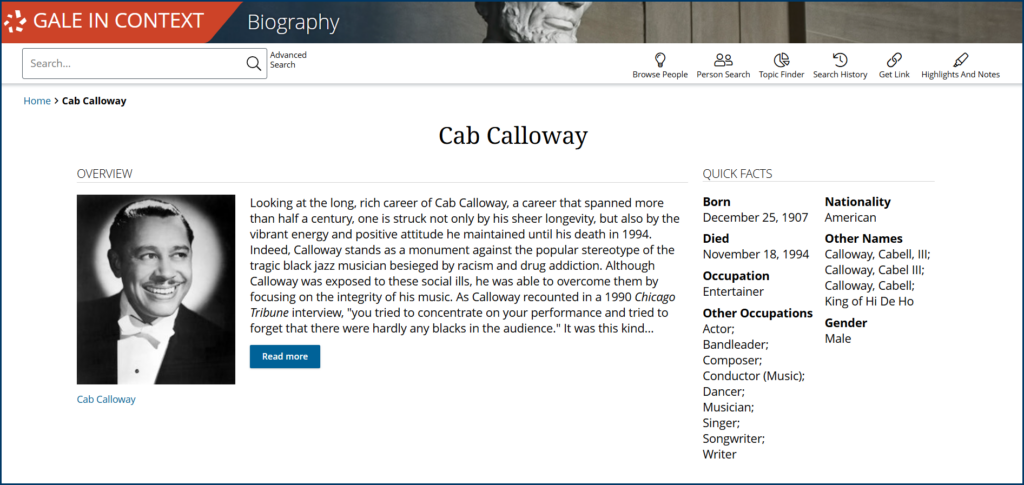
Collaboration in “Minnie the Moocher”
Calloway’s legendary performances of “Minnie the Moocher” included a hi-de-ho call-and-response that challenged the audience to match his dynamism. The louder the crowd echoed him, the more he pushed them, stretching syllables, exaggerating vowels, and building the tension until the air felt electric.
Nat King Cole (1919–65)
Early in Nat King Cole’s career, his piano playing turned heads—but it was his warm baritone voice that catapulted the Alabamian from the club circuit to mainstream success. Hits like “Unforgettable” and “Mona Lisa” made him one of the best-selling artists of the 40s and 50s.
Cole’s influence went beyond the music charts. In 1956, he became the first black American to host a nationally televised variety show, which bore his moniker and ran for a season and a half.
Critical Thinking in “Route 66”
Cole’s ability to make micro-adjustments is evident in “Route 66,”where his phrasing never sits rigidly in the pocket. He adjusts to create a sense of motion that pairs thematically with the song. This kind of control is an active process requiring an analytical mind and a deep understanding of musical structure. It’s just one example of how Cole didn’t play by the rules of timing and harmony but treated them like variables in an equation he could manipulate to shape the song’s momentum.
Bring Jazz to Life Through Biography
Introducing high school students to jazz opens up conversations about the value of creativity, communication, collaboration, and critical thinking—and how these artists leveraged them to their benefit, and the delight of audiences everywhere.
Gale In Context: Biography provides detailed profiles to challenge students to engage with the artistry and thought that goes into jazz. You can request a free trial by contacting your Gale sales rep, and give the platform a try just in time for International Jazz Day.

